Published 30 Sep 2018
Vincent Van Gogh Self-Portrait
Dutchman with a Mission
The son of a protestant Minister, Vincent van Gogh worked as an evangelist before turning to art at the age of 27. He brought the same zeal to painting until his tragic suicide 10 years later.
One of the most original artists ever, Vincent van Gogh worked as an evangelist before taking up painting at the age of 27. He was largely self-taught, but absorbed the inspiring lessons of Impressionism while in Paris for two years. Then he moved alone to Arles in the south of France, where he painted the landscapes, still-lives and portraits which became his most famous works. They are all signed simply 'Vincent'.
Van Gogh's life was a grim and desperate struggle against poverty, hunger, alcoholism and insanity. His attempt to found an artist's colony with the painter Paul Gauguin ended in the harrowing experience of self-mutilation, when he cut off part of his left ear. And though his younger brother Theo supported him to the last, Vincent's agony ended in suicide. He shot himself in the chest, aged 37.
Windmills of Holland
Vincent Willam van Gogh was born on 30 March 1853 in the small Dutch village of Groot Zunbdert, near the Belgian border. He was the first surviving son of the local pastor, Theodorus van Gogh and his wife Cornelia, a gentle, artistic woman.
The artist's parents
Theodorus van Gogh, the pastor of Groot Zundert, was a pious man who encouraged his son's religious leanings, but Vincent's passionate evangelism provoked many arguments between them. His wife Cornelia, a boot-binder's daughter, was related to painters and art dealers. She painted watercolours before her marriage.
Groot Zunddert church
Near the door of his father's church stood the tombstone of Vincent's still-born older brother, who had the same birthday and the same name.
By an extraordinary coincidence, the boy was born exactly one year to the day after Cornelia had delivered a stillborn baby, also called Vincent Willem.
The grieving parents had placed a gravestone in the village churchyard for their lost infant son, so little Vincent grew up with a constant reminder of his dead namesake. He was a difficult child, who spent his time walking alone in the fields, rarely playing even with his younger brother Theo or his three little sisters. There is no record of his school career, but - encouraged by his mother - he drew and painted regularly from his early teens.
Vincent at 13
Windmills of Holland
Vincent Willam van Gogh was born on 30 March 1853 in the small Dutch village of Groot Zunbdert, near the Belgian border. He was the first surviving son of the local pastor, Theodorus van Gogh and his wife Cornelia, a gentle, artistic woman.
The artist's parents
Theodorus van Gogh, the pastor of Groot Zundert, was a pious man who encouraged his son's religious leanings, but Vincent's passionate evangelism provoked many arguments between them. His wife Cornelia, a boot-binder's daughter, was related to painters and art dealers. She painted watercolours before her marriage.
Groot Zunddert church
Near the door of his father's church stood the tombstone of Vincent's still-born older brother, who had the same birthday and the same name.
By an extraordinary coincidence, the boy was born exactly one year to the day after Cornelia had delivered a stillborn baby, also called Vincent Willem.
The grieving parents had placed a gravestone in the village churchyard for their lost infant son, so little Vincent grew up with a constant reminder of his dead namesake. He was a difficult child, who spent his time walking alone in the fields, rarely playing even with his younger brother Theo or his three little sisters. There is no record of his school career, but - encouraged by his mother - he drew and painted regularly from his early teens.
Vincent at 13
One of Vincent's uncles was a successful art dealer with a business in the Hague which he had merged with the Paris-based international firm of Goupil & Co. When Vincent left school at the age of 16, Uncle Cent found him a job in the Hague office, where he worked steadily for four years, with a short spell in the Brussels branch. But this period of calm was not to last. In 1873 Vincent was transferred to London, where he fell disastrously in love with his landlady's daughter. The affair effected his ability to work and he was dismissed.
Claude Monet: The Thames at London 1871
In 1876 Van Gogh returned to England as an unpaid assistant in a private school in Ramsgate. After a few months the school moved to London, where he was given the job of collecting overdue school fees in some of the city's poorest areas. It was his first real view of urban squalor and what he saw so distressed him that he could not bring himself to collect a penny. He soon resigned.
But the experience of poverty awakened a religious zeal in Van Gogh, who now followed his father's example by becoming an assistant preacher to a Methodist minister. He enjoyed this work enormously, and after a few months he returned to Holland to train formally for the ministry. Vincent's parents doubted that he had the self-discipline to cope with the rigorous studies required. They were right: he gave up after a year. But his passion was unchecked, and at the age of 25 he moved to the Borinage, a grim coal-mining district in southern Belgium to follow the calling of an evangelist.
Mission to the miners
At the age of 25; Van Gogh went as a missionary to the Borinage district of Belgium. There he made his decision to become an artist.
The poverty Vincent found there was even worse than in London. He threw himself into his work with a selfless fervour, interpreting Christ's message to 'give to the poor' so literally that he even gave his warm clothes away, and ate almost nothing. His superiors were appalled by his 'excessive' zeal. They were also dismayed by his appearance, which they felt brought disrespect on his calling. Once again, Vincent was dismissed.
Van Gogh remained in the Borinage for two hard years, surviving no one knew how. And there, he experienced a profound personal crisis, to emerge with a new resolve: to become an artist.
He went home to his parents and applied himself to the task with the same vigour he had brought to evangelism. For months he was happier than ever before; and his work improved rapidly. But ominous signs of instability revealed themselves in his stormy behaviour. Another abortive love affair shook him badly, then a religious quarrel with his father reached such a pitch that Vincent walked out of the house on Christmas Day 1881, and moved to The Hague.
With no money to live on, he was forced to ask Theo for help. His loyal brother sent him a tiny allowance each month from his own small salary - in the spirit of self-sacrifice that would endure throughout Vincent's life.
Thé
Meanwhile, the landscape artist Anton Mauve (a relation of Van Gogh's mother) encouraged his painting until a typical outburst brought their friendship to an end. Defiantly, Vincent shared his room with a prostitute and her small child, and even talked of marriage until Theo persuaded him to drop the plan.
Vincent returned home in 1884. His parents, who had moved to a new church in Nuenen, welcomed him like a prodigal son. Now he began to work on portraits of peasants and after yet another emotional disaster he executed his most ambitious picture to date: The Potato Eaters, a gloomy painting of peasants at their evening meal.
Van Gogh: Sketch of Church at Nuenen
Van Gogh: The Potato Eaters
Pastor Theodorus died in 1885, and the same year Van Gogh left Holland, never to return. He went first to Belgium and enrolled at the academy in Antwerp, but failed his first term of study. By the time the results were declared, he had already left for Paris.
Paris and Montmartre
Paris in the 1880s was one of Europe's grandest cities, with the magnificent new avenue of the Champs Elysées stretching from the Louvre to the Arc de Triomphe. But the centre of the art world was Montmartre, in the hills to the north of the city.
One day Theo - still working for Goupil's - received a brief note to 'come to the Salle Carée in the Louvre as soon as possible,' where his brother was waiting.
But while Vincent's art progressed rapidly, he stuck out like a sore thumb among the urbane Parisian artists. He drank heavily, he had a quick unpredictable temper, he shouted when excited about anything and was incapable of either hiding his opinions or softening them to avoid arguments. He even managed to alienate Theo, but not for long. After two years in Paris he declared 'I will take myself off somewhere down south.'
Van Gogh in Paris
In 1886 Vincent moved to Paris, where he shared a flat with his brother Theo in the village suburb of Montmartre. There he met and painted with other artists - including Toulouse-Lautrec and Gauguin - but two years of hard work and heavy drinking took a severe toll of his health. The self-portrait above, showing him thin and drawn, was painted in 1887.
In Paris, Vincent had come to like Japanese art and his fondness for it influenced his choice of domicile. As he imagined the south of France to be the French equivalent of Japan, he moved to Arles - a provincial city near Marseilles. He arrived by train in February 1888 to find the town covered in snow.
Arles, France
The Move to Arles
Vincent left Paris in 1888 for Arles, near Marseilles. He worked their alone for nine months, before persuading Gauguin to join him.
When spring came, Vincent rented a two-storey house in the Place Lamartine. The outside walls were yellow - symbolic of friendship in Japanese culture. He was delighted with the yellow house, and tackled his work in a mood of rare happiness, bordering on ecstasy. 'Ideas,' he wrote to Theo, 'are coming to me in swarms'.
Vincent's strange appearance and behaviour caused some concern among the townspeople, but he struck up a genuine friendship with the postman Roulin and his family, a local café owner and a lieutenant from the army.
As usual, Van Gogh was overworking, but he felt secure and full of hope. He felt ready to embark on a project he had long contemplated: the establishment of an artist's colony. He wanted Paul Gauguin to be the first to join, and enlisted Theo to help persuade him. Gauguin - then working in Brittany - was reluctant at first, but when Theo offered to pay his fare, he finally agreed.
Paul Gauguin
But the very night he wrote these words, in Christmas week, 1888, something happened to snap Vincent's self-control. He threw a glass of absinthe at Gauguin, and later threatened him with a razor. Gauguin took shelter in a nearby hotel, leaving him to calm down. But during the night Van Gogh cut off the lobe of his left ear, then put it in an envelope and gave it to a prostitute.
Gauguin left for Paris by the first available train. Vincent - suffering from hallucinations as well as loss of blood - was taken to Arles hospital.
Arles Hospital
He was released after two weeks, but overwork and a terror of madness brought on a relapse, which made him go back into hospital. When he had recovered enough to go back to the Yellow House, he was persecuted by the townspeople, 80 of whom signed a petition saying that the 'madman' should be put away.
Vincent's breakdown
Overwhelmed with remorse after attacking Gauguin, Van Gogh cut off a piece of his own ear and gave it to a prostitute. The next day, he was committed to Arles hospital. The nightmare of insanity, from which he would never fully recover, had begun.
By the spring of 1889, when Vincent had been in Arles for a year, all his hope had gone. The artists colony had come to nothing. Gauguin had vanished. His friend Roulin had been transferred to another town. Vincent dreaded the return of his insanity so much that in May he left Arles and committed himself voluntarily to an asylum in the nearby town of Saint Rémy.
Slowly he began to come to terms with his illness - perhaps a form of epilepsy, schizophrenia, or the result of brain damage at birth. He received no treatment except cold baths twice a week. Bouts of convulsions and hallucinations occurred in a three-monthly cycle, but he still produced some 200 canvases during his year in the asylum.
Van Gogh The asylum garden at Saint Rémy
In the spring of 1890 Theo reported hopeful signs that Vincent's work was at last being recognized. In February, a painting of an Arles vineyard was sold for 400 francs in a Brussels exhibition. It was the only canvas Van Gogh ever sold.
Van Gogh: The Red Vineyard at Arles
Letter from Vincent
For years the brothers corresponded every week.
Starry night over the Rhône
" — the starry sky at last, actually painted at night, under a gas-lamp. The sky is green-blue, the water is royal blue, the fields are mauve. The town is blue and violet. The gaslight is yellow, and its reflections are red gold and go right down to green bronze. Against the green-blue field of the sky the Great Bear has a green and pink sparkle whose discreet paleness contrasts with the harsh gold of the gaslight. Two small coloured figures of lovers in the foreground."
It was time to leave the South. Vincent's old friend Camille Pissarro suggested he move to Auvers, a village northwest of Paris that was popular with artists. Thus, Vincent spent a few days with Theo and his new wife - and their baby son, named Vincent Willem after his uncle - then caught a train to Auvers. There, he was placed in the care of Dr Gachet, an amiable eccentric.
The Café in Auvers where Van Gogh Died
Early in July, however, a trip to visit Theo in Paris caused him great anxiety. Theo was worried about money - and the cost of supporting Vincent was very high.
On Sunday 27 July 1890, Van Gogh walked out of Auvers into the countryside. He returned late in the evening, went straight up to his room and lay on the bed. He had shot himself in the chest. All that night he lay awake, smoking his pipe. The next day Theo arrived, alerted by Dr Gachet. All through Monday his friends watched over him, until at one o'clock in the morning he died in his brother's arms. He was 37.
He went home to his parents and applied himself to the task with the same vigour he had brought to evangelism. For months he was happier than ever before; and his work improved rapidly. But ominous signs of instability revealed themselves in his stormy behaviour. Another abortive love affair shook him badly, then a religious quarrel with his father reached such a pitch that Vincent walked out of the house on Christmas Day 1881, and moved to The Hague.
With no money to live on, he was forced to ask Theo for help. His loyal brother sent him a tiny allowance each month from his own small salary - in the spirit of self-sacrifice that would endure throughout Vincent's life.
Thé
Meanwhile, the landscape artist Anton Mauve (a relation of Van Gogh's mother) encouraged his painting until a typical outburst brought their friendship to an end. Defiantly, Vincent shared his room with a prostitute and her small child, and even talked of marriage until Theo persuaded him to drop the plan.
Vincent returned home in 1884. His parents, who had moved to a new church in Nuenen, welcomed him like a prodigal son. Now he began to work on portraits of peasants and after yet another emotional disaster he executed his most ambitious picture to date: The Potato Eaters, a gloomy painting of peasants at their evening meal.
Van Gogh: Sketch of Church at Nuenen
Pastor Theodorus died in 1885, and the same year Van Gogh left Holland, never to return. He went first to Belgium and enrolled at the academy in Antwerp, but failed his first term of study. By the time the results were declared, he had already left for Paris.
Paris and Montmartre
Paris in the 1880s was one of Europe's grandest cities, with the magnificent new avenue of the Champs Elysées stretching from the Louvre to the Arc de Triomphe. But the centre of the art world was Montmartre, in the hills to the north of the city.
One day Theo - still working for Goupil's - received a brief note to 'come to the Salle Carée in the Louvre as soon as possible,' where his brother was waiting.
Vincent moved into Theo's flat in Montmartre and studied for a few months at the studio of an academic painter named Fernand Cormon, along with Emile Bernard and Toulouse-Lautrec. All three soon broke with Cormon, who was hostile to the new Impressionist movement, led by Monet, Renoir and Degas. But Vincent was inspired by the colour of their paintings, and their habit of working in the open air. Through Theo, he met Camille Pissarro, one of the elder Impressionists, and a still more revolutionary figure: Paul Gauguin.
Van Gogh in Paris
In 1886 Vincent moved to Paris, where he shared a flat with his brother Theo in the village suburb of Montmartre. There he met and painted with other artists - including Toulouse-Lautrec and Gauguin - but two years of hard work and heavy drinking took a severe toll of his health. The self-portrait above, showing him thin and drawn, was painted in 1887.
In Paris, Vincent had come to like Japanese art and his fondness for it influenced his choice of domicile. As he imagined the south of France to be the French equivalent of Japan, he moved to Arles - a provincial city near Marseilles. He arrived by train in February 1888 to find the town covered in snow.
Arles, France
The Move to Arles
Vincent left Paris in 1888 for Arles, near Marseilles. He worked their alone for nine months, before persuading Gauguin to join him.
When spring came, Vincent rented a two-storey house in the Place Lamartine. The outside walls were yellow - symbolic of friendship in Japanese culture. He was delighted with the yellow house, and tackled his work in a mood of rare happiness, bordering on ecstasy. 'Ideas,' he wrote to Theo, 'are coming to me in swarms'.
Vincent's strange appearance and behaviour caused some concern among the townspeople, but he struck up a genuine friendship with the postman Roulin and his family, a local café owner and a lieutenant from the army.
As usual, Van Gogh was overworking, but he felt secure and full of hope. He felt ready to embark on a project he had long contemplated: the establishment of an artist's colony. He wanted Paul Gauguin to be the first to join, and enlisted Theo to help persuade him. Gauguin - then working in Brittany - was reluctant at first, but when Theo offered to pay his fare, he finally agreed.
Paul Gauguin
When Gauguin arrived at Arles in October 1888, he moved into the Yellow House, but he disliked the town and found Vincent's untidiness irritating. For a short time piece prevailed, but within two months the two artists were arguing fiercely. Cynical and arrogant, Gauguin made a bad match for the passionate, obstinate Dutchman. Van Gogh was soon making excuses to Theo for their lack of rapport, predicting sadly that Gauguin would 'definitely go, or else definitely stay' and claiming to await his decision with 'absolute serenity'.
But the very night he wrote these words, in Christmas week, 1888, something happened to snap Vincent's self-control. He threw a glass of absinthe at Gauguin, and later threatened him with a razor. Gauguin took shelter in a nearby hotel, leaving him to calm down. But during the night Van Gogh cut off the lobe of his left ear, then put it in an envelope and gave it to a prostitute.
Gauguin left for Paris by the first available train. Vincent - suffering from hallucinations as well as loss of blood - was taken to Arles hospital.
Arles Hospital
He was released after two weeks, but overwork and a terror of madness brought on a relapse, which made him go back into hospital. When he had recovered enough to go back to the Yellow House, he was persecuted by the townspeople, 80 of whom signed a petition saying that the 'madman' should be put away.
Vincent's breakdown
Overwhelmed with remorse after attacking Gauguin, Van Gogh cut off a piece of his own ear and gave it to a prostitute. The next day, he was committed to Arles hospital. The nightmare of insanity, from which he would never fully recover, had begun.
By the spring of 1889, when Vincent had been in Arles for a year, all his hope had gone. The artists colony had come to nothing. Gauguin had vanished. His friend Roulin had been transferred to another town. Vincent dreaded the return of his insanity so much that in May he left Arles and committed himself voluntarily to an asylum in the nearby town of Saint Rémy.
Slowly he began to come to terms with his illness - perhaps a form of epilepsy, schizophrenia, or the result of brain damage at birth. He received no treatment except cold baths twice a week. Bouts of convulsions and hallucinations occurred in a three-monthly cycle, but he still produced some 200 canvases during his year in the asylum.
Van Gogh The asylum garden at Saint Rémy
In the spring of 1890 Theo reported hopeful signs that Vincent's work was at last being recognized. In February, a painting of an Arles vineyard was sold for 400 francs in a Brussels exhibition. It was the only canvas Van Gogh ever sold.
For years the brothers corresponded every week.
Starry night over the Rhône
To Theo from Arles
September 1888
" — the starry sky at last, actually painted at night, under a gas-lamp. The sky is green-blue, the water is royal blue, the fields are mauve. The town is blue and violet. The gaslight is yellow, and its reflections are red gold and go right down to green bronze. Against the green-blue field of the sky the Great Bear has a green and pink sparkle whose discreet paleness contrasts with the harsh gold of the gaslight. Two small coloured figures of lovers in the foreground."
It was time to leave the South. Vincent's old friend Camille Pissarro suggested he move to Auvers, a village northwest of Paris that was popular with artists. Thus, Vincent spent a few days with Theo and his new wife - and their baby son, named Vincent Willem after his uncle - then caught a train to Auvers. There, he was placed in the care of Dr Gachet, an amiable eccentric.
Vincent painted steadily, seeming at first to be healthy and in good spirits. He took a small room in a café and kept regular hours.
The Café in Auvers where Van Gogh Died
Death in Auvers
Vincent's last home was this café at Auvers, northwest of Paris, where he lived for six weeks from 20 May until 27 July 1890. That Sunday, he walked off into the fields and shot himself in the chest, then staggered home to die in his small upstairs room.Early in July, however, a trip to visit Theo in Paris caused him great anxiety. Theo was worried about money - and the cost of supporting Vincent was very high.
On Sunday 27 July 1890, Van Gogh walked out of Auvers into the countryside. He returned late in the evening, went straight up to his room and lay on the bed. He had shot himself in the chest. All that night he lay awake, smoking his pipe. The next day Theo arrived, alerted by Dr Gachet. All through Monday his friends watched over him, until at one o'clock in the morning he died in his brother's arms. He was 37.
In 1914, Theo's body was exhumed and reburied with his brother at Auvers-sur-Oise.
Van Gogh only came to painting in the last few years of his life, but his output was enormous. He produced more than 800 canvases - working day and night, as if aware of the short time allotted to him.
When Van Gogh took the fateful decision to devote himself to art, in the bleak coal-mining district of the Borinage in Belgium, he was already 27. He had enjoyed sketching since childhood, especially of views of the flat Dutch countryside, with peasants labouring in the fields. But he had never learned to paint in oils.
Van Gogh: The Sower
Renoir: The Bridge at Chatou
Van Gogh: The Potato Eaters 1885
Dutch Peasants
Van Gogh: Peasant Woman 1885
In Paris, too, he was inspired by Japanese art, which had recently become popular, as hundreds of woodcut prints were readily available at a couple of francs apiece.
Vincent saw Arles as a French version of Japan, and he travelled south in 1888 as if on a personal mission to create a new movement in art. For over a year he worked himself to breaking point, painting up to 16 hours a day. He had always worked in frenzied bursts of activity, heedless of deteriorating health, but now he scarcely stopped to eat or drink, almost as if aware of the short lifespan allotted to him.
Van Gogh: The Painter on his Way to Work 1888
When Van Gogh took the fateful decision to devote himself to art, in the bleak coal-mining district of the Borinage in Belgium, he was already 27. He had enjoyed sketching since childhood, especially of views of the flat Dutch countryside, with peasants labouring in the fields. But he had never learned to paint in oils.
At first he concentrated on drawing, employing a teach-yourself method of the time known as the Barques technique.
Van Gogh: The Sower
He was very conscious of his deficiencies, and eagerly associated with other painters, among them his relative Anton Mauvre, whom he visited in The Hague. But Vincent's fierce independence and stormy temperament made it impossible for him to be a pupil - he invariably argued with his mentors.
In Paris, he was inspired by the works of the Impressionists and their followers, who had abandoned the methods of traditional art. Working out of doors, instead of in the studio, they ignored the idea of a 'finished' painting, in which all colours were mixed on the palette to the correct shade, then laid down smoothly on the canvas and finally varnished.
Renoir: The Bridge at Chatou
Instead they used pure, bright colours - reds and blues, yellows, whites and greens - and applied their paint in rough brush strokes which gave the impression of light being reflected from natural surfaces.
The Impressionist method suited Vincent's purposes. Like them, he liked to work fast and out-of-doors, and he soon abandoned the sombre browns and blacks he had used in Holland for paintings such as The Potato Eaters.
Van Gogh: The Potato Eaters 1885
Dutch Peasants
The dark masterpiece of Van Gogh's early period, The Potato Eaters, is coloured 'like a dusty potato'. It shows Vincent's concern for the hard life of the Dutch peasant, and his respect for the dignity of labour - which is also shown in Peasant Woman, drawn in the same year, 1885.
Van Gogh: Peasant Woman 1885
When Vincent went to Paris a year later, his painting changed completely, under the influence of the Impressionists.
In Paris, too, he was inspired by Japanese art, which had recently become popular, as hundreds of woodcut prints were readily available at a couple of francs apiece.
Vincent saw Arles as a French version of Japan, and he travelled south in 1888 as if on a personal mission to create a new movement in art. For over a year he worked himself to breaking point, painting up to 16 hours a day. He had always worked in frenzied bursts of activity, heedless of deteriorating health, but now he scarcely stopped to eat or drink, almost as if aware of the short lifespan allotted to him.
Every day, through the blazing heat of the summer, he would march out and set up his easel.
Van Gogh: The Painter on his Way to Work 1888
The Painter on his Way to Work
Van Gogh sets out with his easel, canvas and paints to work in the blazing sunshine of southern France. He often completed a picture in a single day.
In the autumn he tried unsuccessfully to defy the fierce southern wind, the Mistral, by pinning his canvas to the ground with heavy boulders. He would paint all night, if necessary. To give himself enough light to paint The Café Terrace, he stuck candles round his broad-brimmed hat and along the top of his easel, and as the bemused Arlesiens looked on, he began to paint, 'absolutely piling on, exaggerating the colour'.
Van Gogh: Café Terrace at Night
Café Terrace at Night
Executed in Arles, this painting shows the method of using dashes of colour that Vincent had learnt in Paris. The technique is particularly obvious - and effective - in the cobblestones of the street. The detail (below) clearly illustrates another characteristic technique: how thickly he applies the paint. The heavy layers of yellow make the café light glow warmly against the dark blue of the night.
Vincent had always painted with thick layers of colour. Even for some of the Dutch pictures he had applied paint so liberally that individual brushstrokes were apparent, and he even resorted to squeezing paint straight from the tube onto the canvas, then modelling it 'a little' with his brush. Though he later learned to texture his surfaces with great sensitivity, this thickly-applied paint - known as impasto - remained a hallmark of Van Gogh's art.
Van Gogh: The Stevedores at Arles
Influences from Japan
The Stevedores at Arles is painted with thick, lengthy brushstrokes and marked colour contrasts. It shows a view of the Rhône with a blazing sunset in which the forms of the subject - clearly influenced by Japanese art - stand out against the light.
By 'exaggerating the colour', Van Gogh explained to his brother Theo, he wished 'to express myself forcibly' Colours for him did not merely depict objects, but gave them meaning - and no colour meant more to him than yellow. In Japan it symbolized friendship. It represented the glory of the sun and the golden wheat. In short, it was the colour of creation.
Utagawa Hiroshige: Bridge in the Rain
Inspired by Japan
Van Gogh made a copy of this wood-cut, which was one of the many Japanese prints he collected. It shows the bright colour and simplicity of design that typified Japanese art, and appealed so strongly to Vincent and his contemporaries.
Even in his night pictures yellow plays a surprisingly important part. And in his famous painting Sunflowers he created a whole painting with little colour other than yellow, a technical feat almost without parallel.
Van Gogh: Sunflowers 1888
Sunflowers
Possibly Van Gogh's best-known painting, this picture is made up almost entirely of yellow, Vincent's favourite colour. It had to be painted very quickly before the flowers dropped, but in fact there are nearly as many seed heads as there are blooms.
Letters to Theo requesting paint highlight Vincent's preference. They always start with demands for large tubes of yellow and white paint. And the other colours he used heavily, especially purples and blues, serve to emphasize the power of yellow. His concern for colour extended to the framing of each work, and it was not uncommon for him to give explicit instructions to insure the right affect: on one occasion he asked for a royal blue and gold frame to be designed especially for his canvas.
In the month before his breakdown, Vincent produced some 200 paintings, including about 50 portraits of his friends in Arles.
Van Gogh: Portrait of Milliet, Second Lieutenant of Light Infantry, friend of Van Gogh
Frequently he completed a painting in a single day - an amazing work-rate; even by the standards of the Impressionists. 'I was right,' he wrote to Theo, 'to work at white heat as long as I was fine.' And when his brother once hinted that his enormous output might adversely affect the quality of his work, he retorted that 'Quick work does not mean less serious work, it depends on one's self-confidence and experience.'
Under the crushing weight of mental collapse, Van-Gogh's self-confidence became badly bruised. The swirling lines that distinguish all his late paintings seem to echo the anguish in his soul.
Yet in the final phase of his career, Vincent still worked at a punishing rate, producing a further 200 paintings in the last year of his life. Among them was one of his greatest masterpieces - the Self- Portrait of 1890. One in a series of self-portraits equalled only by Rembrandt's for their candour and penetration, it is a painting almost without colour, dominated by pale, icy tones, warmed faintly by the orange-brown of the artist's hair and beard.
Van Gogh: Self-Portrait 1890
Self-Portrait 1890
In one of his last self-portraits, Vincent shows himself tense and tired after a series of breakdowns. His jacket merges with the pail, swirling background, while his red beard stands out strongly.
Van Gogh: The Yellow House 1888
The Yellow House
Vincent's home from the spring of 1888 stood in the Place Lamartine, near the River Rhône in Arles. It was a small two-up, two down building on the corner of a square, a private house attached to a food shop. Later, the whole building was converted into a bar.
It was bombed in 1944.
Van Gogh pained the bedroom in his 'Yellow House' at Arles in the autumn of 1888, while awaiting Gauguin's arrival. It was one of a series of attempts he made to decorate the house and - he hoped - impress his friend. He had been living alone in Arles for months, and now he hoped the house would become the backbone of an artists' colony, with Gauguin at its head.
He painted the room as simply as possible, with pure, harmonious colours and strongly outlined shapes. The room (below) is shown empty of people, but with an are of expectancy: everything is painted in pairs. The two pairs of pictures, two pillows, and specially the two chairs may well reflect Vincent's excitement that his solitude was about to end.
Van Gogh: The Bedroom at Arles 1888
A Sketch for Gauguin
Vincent included this sketch in a letter he wrote to Gauguin in September 1888, describing his painting as 'an interior of nothing at all' in which he hoped to express 'absolute restfulness'.
Vincent's chair
The bedroom chairs were part of a set of rustic furniture that Vincent had bought for his proposed 'artists colony'. In December 1888 when he realised that Gauguin was likely to abandon him, he painted his own chair - identified by his pipe and tobacco - in isolation.
Thickly-painted pillows
Vincent nearly always loaded his brush heavily, and applied the paint thickly. In this detail, the individual brushstrokes can be seen, bounded by ridges of paint.
Dark outlines
This still-life detail shows Van Gogh's method of painting objects featuring flat areas of colour with bold outlines - a technique he copied from Japanese art.
Picture Exhibition
Van Gogh's reputation is based on pictures painted in the last four years of his life, because his arrival in Paris in 1886 brought a complete change in his life. The bright paintings of the Impressionists and the bold designs of Japanese prints inspired him to abandon his dark pictures of peasant life and instead paint colourful canvases of his closest friends and his daily environment.
Père Tanguy is among the first in a series of close-up portraits of his friends, which he continued after moving to Arles, where he painted the Postman Roulin. In the brilliant southern sunshine his colours became still brighter, with yellow predominating, as it does in Bedroom at Arles and Sunflowers.
Within months of painting these pictures, Van Gogh suffered a mental collapse. Cornfield and Cypresses, and Starry Night were among the 200 canvases while he was in St Rémy asylum, and the troubled Church at Auvers and his late Self-Portrait both seem to presage his tragic suicide.
Van Gogh: Pière Tanguy 1887
Pière Tanguy
Van Gogh made several portraits of his friend, who ran an art supplies shop in Paris, where penniless artists could meet and exchange their works for paint and canvases. The pictures lining the walls behind the old man are Vincent's own copies of Japanese prints.
The Postman Roulin
The Postman Joseph Roulin was one of Vincent's few friends in Arles. In this portrait, the postman sits alertly, with raised eyebrows and a direct gaze. The painting has a humorous quality, accentuated by Roulin's full, fishtail beard.
Van Gogh: Cornfield and Cypresses 1889
Cornfield and Cypresses
After his admission to St Rémy mental asylum: Vincent was allowed out to paint - under supervision. He was fascinated by the cypress trees in the south of France, and painted them many times, often emphasising their writhing, flame-like shapes.
Van Gogh: The Church at Auvers 1890
The Church at Auvers
Vincent moved to Auvers in northern France after he left the asylum at St Rémy. This painting of the village church, with its strange perspective - twisted shapes and harsh colour - was painted the month before he committed suicide.
Starry Night over the Rhône
View of Arles at night from the banks of the River Rhône. The position chosen for the execution of the work allowed Van Gogh to capture the reflections of the gas lighting of Arles on the gleaming waters of the river.
Van Gogh: Starry Night over the Rhône 1888
Starry Night over the Rhône
Van Gogh: Starry Night 1899
Starry Night
One of several 'starry night' pictures that Van Gogh painted. The light from the larger-than-life stars and crescent moon is shown by haloes of yellow and white paint. These expanding circles, built up of dashes of colour, are often seen in Van Gogh's later works.
1853-1890

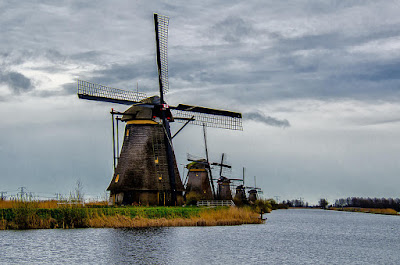



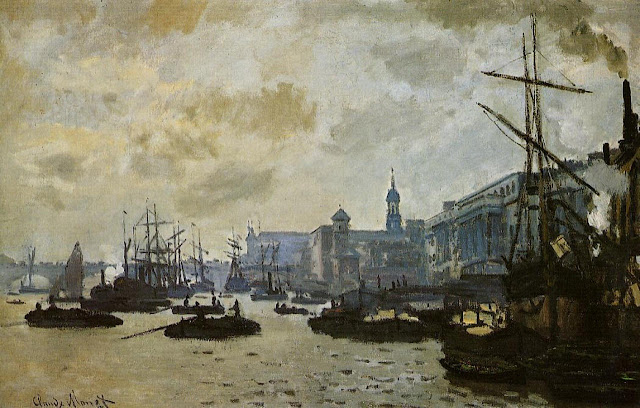

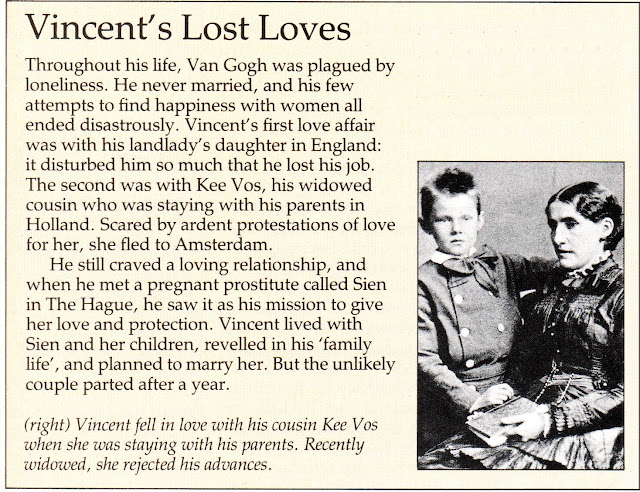








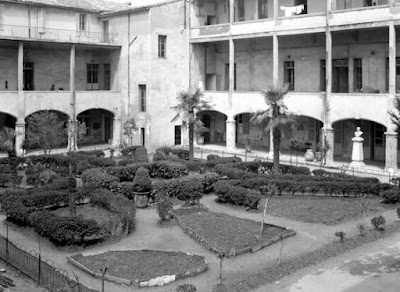









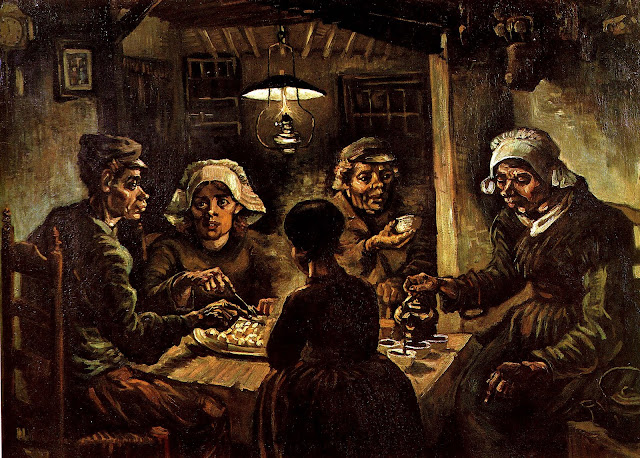


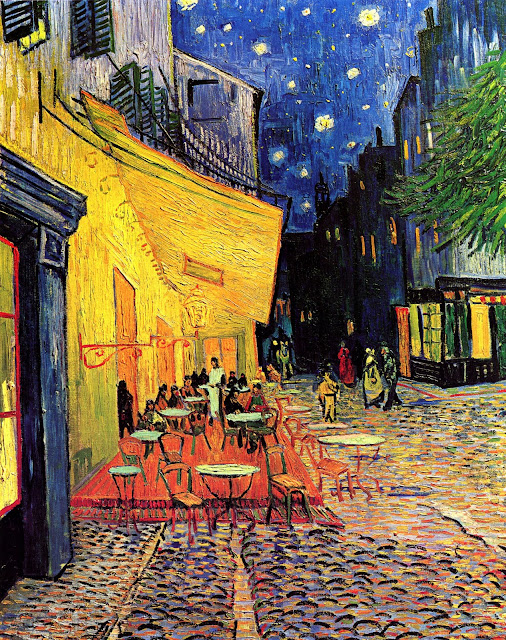


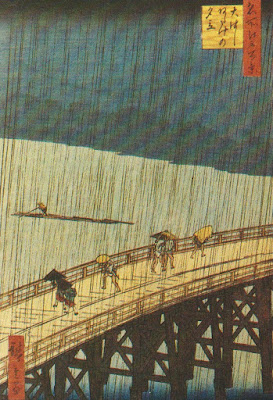



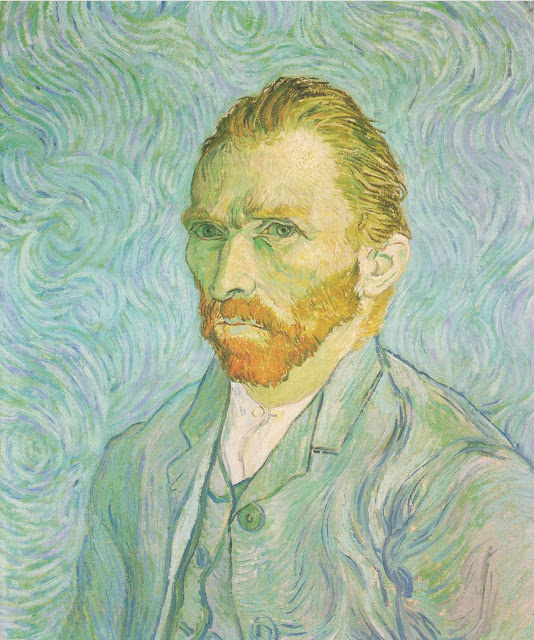


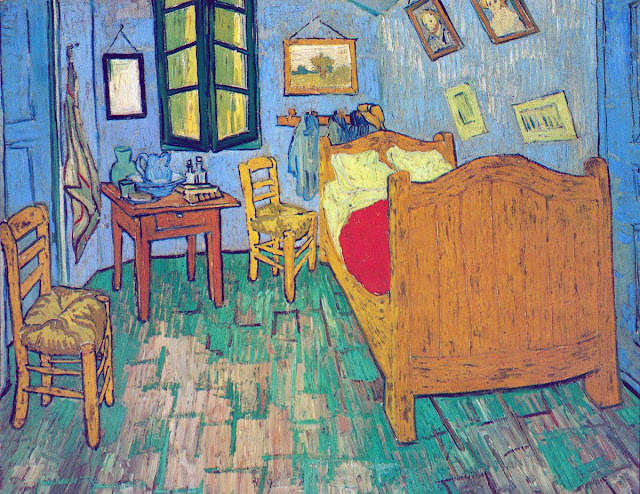














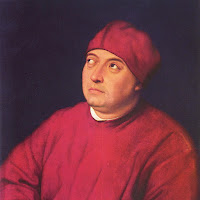








No comments:
Post a Comment